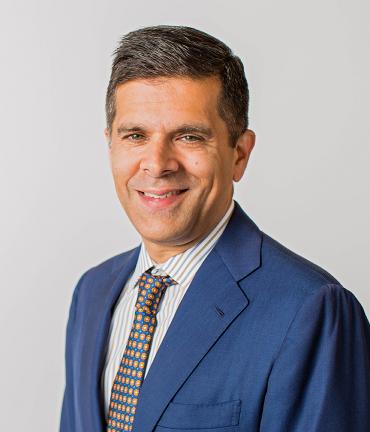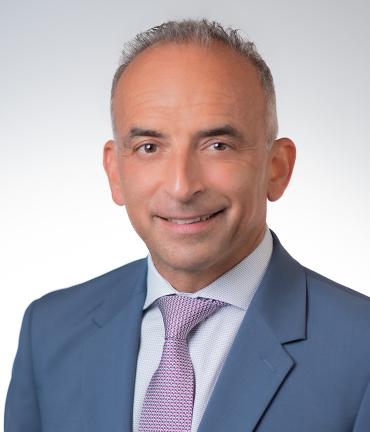
Chordoma
Chordoma is a rare, malignant bone cancer that develops at the base of the skull or in the spine.
Chordoma tumor cells originate from the notochord, an important structure that exists in the neuraxis (axis of the central nervous system) of embryos but disappears before birth. Sometimes notochord cells can remain behind after birth; in patients with chordoma, these cells become abnormal and begin multiplying to form a tumor. Because notochordal cells are preferentially left behind in the clivus (a bone in the base of the skull) and sacrococcygeal regions (in the lower back between the hip bones, near the tailbone), most chordomas arise in the clivus (30%) or sacrum (50%), with the remainder distributed throughout the bony spine.
Chordomas are slow-growing but have a tendency to recur after treatment, and can spread (or metastasize) through the bloodstream to other parts of the body.
Symptoms of chordoma depend on the size and location of the tumor; as the tumor grows, it may compress parts of the brain or spinal cord, resulting in location-specific symptoms.
Chordomas that develop at the base of the skull may result in double vision (diplopia), headaches, or facial pain. If cranial nerves are affected, additional symptoms may occur like difficulty swallowing or abnormal eye movements. If the chordoma becomes large enough to block the flow of cerebrospinal fluid in the brain, than the buildup of fluid can increase pressure in the brain, leading to headaches, nausea, and vomiting.
Chordomas that develop in the spinal cord may cause pain, weakness, or numbness along the back, arms, or legs. If chordoma is in the tailbone, it may affect bladder or bowel control.
Chordoma is rare, with only about 300 new cases diagnosed in the United States each year.1 These tumors primarily affect adults, but may also occur in children.
Chordoma is typically treated with surgical removal of the tumor, which is followed by radiotherapy to lower the risk of tumor recurrence.2 Recurrence of chordoma is common, and may require additional therapy.
Depending on the size and location of the tumor, patients with chordoma in the base of their skulls may be a candidate for minimally invasive skull base surgery. This operation involves removing the tumor endoscopically, using special tools and scopes that pass through small openings – in this case, the nasal passages. Because the tumor is removed through the patient’s nose, this type of procedure does not require drilling into the skull or making facial or scalp incisions.
Patients with chordoma in the spine typically undergo complex spine surgery to remove as much of the tumor as possible.
The primary goal of treatment is to not only to improve long-term survival for patients, but also to increase a patient’s quality of life, by addressing neurological symptoms and preserving cognitive function.
Some chordomas, particularly those that are large and difficult to remove completely, can be challenging to treat. In most cases, complete removal of the tumor followed by radiation offers the best long-term outcomes.
Tumor recurrence is common in patients with chordoma, so patients will continue to be monitored and treated with additional surgery or radiation as needed.
- PDQ Pediatric Treatment Editorial Board. Unusual Cancers of Childhood Treatment (PDQ®): Health Professional Version. 2017 Sep 29. In: PDQ Cancer Information Summaries [Internet]. Bethesda (MD): National Cancer Institute (US); 2002-. Available from: https://www.ncbi.nlm.nih.gov/books/NBK65876/.
- Stacchiotti, S. and J. Sommer, Building a global consensus approach to chordoma: a position paper from the medical and patient community. The Lancet Oncology, 2015. 16(2): p. e71-e83.
Surgical Specialists
This content was reviewed by UCSF neurosurgeon Manish Aghi MD, PhD.

